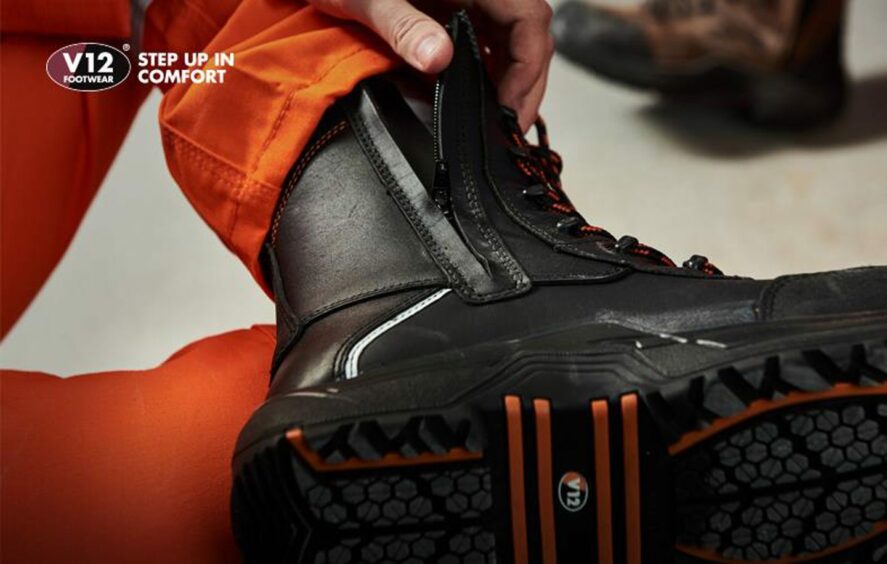
In the world of safety, much importance is placed on protecting the feet from impact from above. But recent HSE statistics tell us that focussing on what happens beneath the feet is even more important:
“Less than 1% of occupational accidents involve toe or physical foot injuries, whereas more than 30% of non-fatal occupational accidents are slip related.”
SLIP RATING AND TESTING: HOW IT WORKS
A slip-resistance test establishes the effectiveness of a boot’s grip. Safety footwear is awarded a slip rating when it achieves a level of grip on a surface treated with a particular contaminant.
A boot gets an SRA rating if it meets the grip standard on a ceramic surface, whereas it’s awarded an SRB rating if it meets this standard on steel. An SRC rating is given if it passes both SRA and SRB tests, making SRC the highest slip resistance rating.
TIMES ARE CHANGING…
The safety standards for protective footwear (EN ISO 20345:2011) have been updated. Boots tested under the new EN ISO 20345:2022 standards will no longer feature SRA, SRB and SRC codes, because slip resistance is now deemed a compulsory requirement for safety footwear, so will automatically have met this standard.
THE SLIP SOLUTION
It was serious and often over-looked slip statistics which inspired V12 to develop the IGSTM (Intelligent Grip System). It’s a sole unit that reflects their commitment to reducing the workplace slips and falls still causing so many major injuries in safety-critical industries nationwide. Let’s take a look in more detail.
HEX PATTERN
V12 analysed tyre patterns to examine the best grip for water and oil dispersal, leading them to develop IGSTM’s hex grip pattern, which channels liquid away and ensures wearers are always in contact with the ground.
LADDER GRIPS
With falls from height causing serious injuries each year, safe ladder work is a commonly overlooked danger that the IGSTM helps reduce with its four deep ladder grips which meet fire-fighter safety standards to keep wearers firm-footed.
HEEL STRIKE
Most slips happen when the heel is placed down to make a new step, so the IGSTM sole is designed with a heel strike at 7º – the angle at which most slips occur – to drastically reduce the chances of falling.
V12 GET REAL: SURFACE TESTING
Slip testing for safety footwear takes place under controlled conditions, yet safety boot wearers will rarely work in these types of conditions. For many, surfaces will be uneven, wet and feature other factors that a testing environment simply won’t replicate. Which is why V12 give wearers in Oil and Gas the additional safety assurance they deserve by getting real with slip-testing.
They test many of their Oil and Gas range on real-life surfaces such as Kennedy Grating and Scaffold board – and it’s this kind of industry-specific, above and beyond approach to safety that’s making V12 the go-to footwear solution for many in the Energy sector.
Want to see less slip accidents and more safety footwear compliance in your workplace? As the industry experts, we can complete a Foot Health and Safety Assessment either remotely or in your workplace, to ensure peace of mind that your workforce are protected. Contact Stuart Kyle, V12 Footwear business development manager for Energy for more information at stuart.kyle@v12footwear.com or tel: +44(0) 1249 651 900.